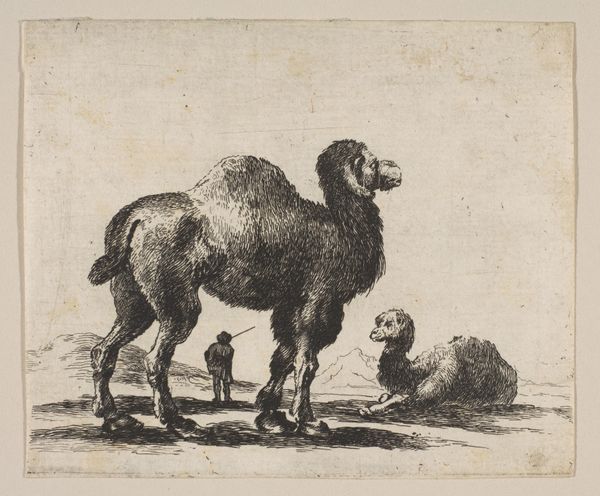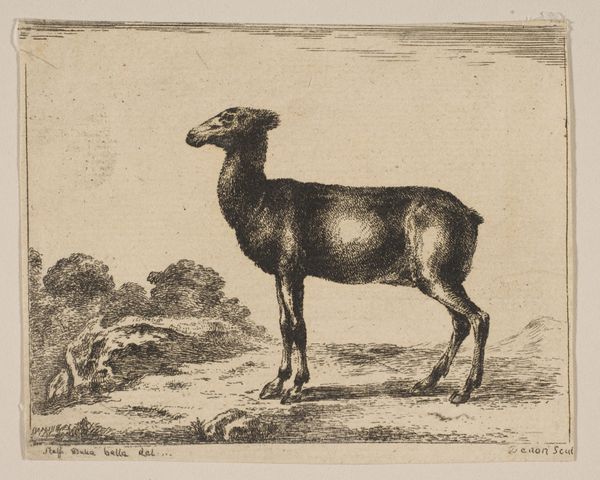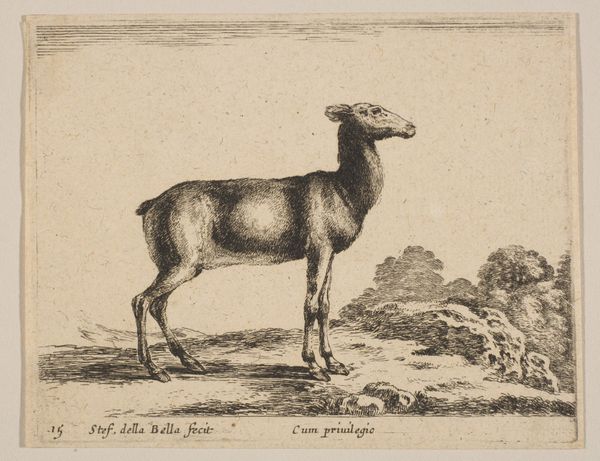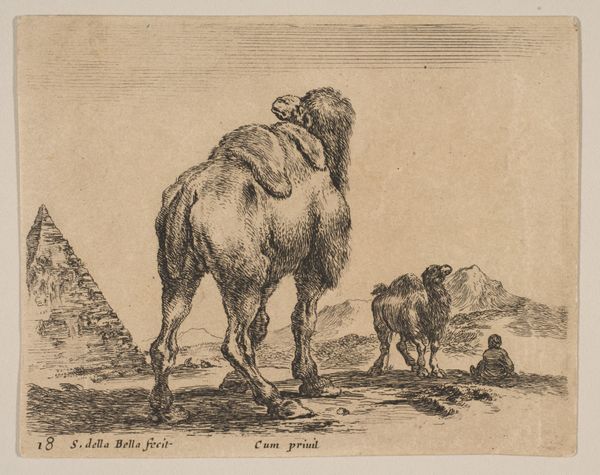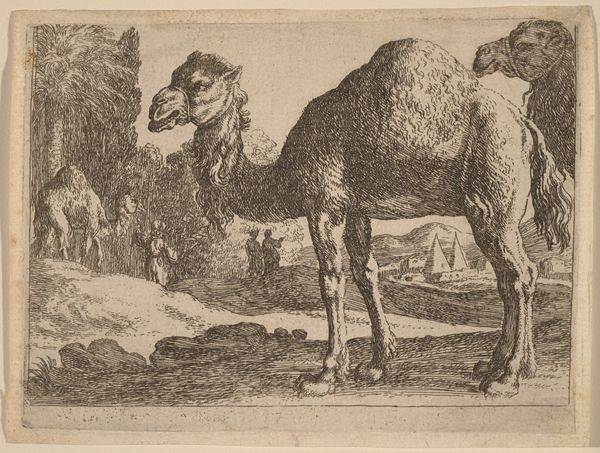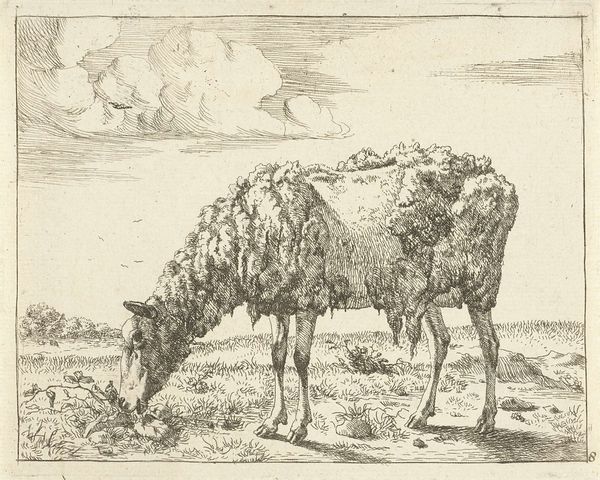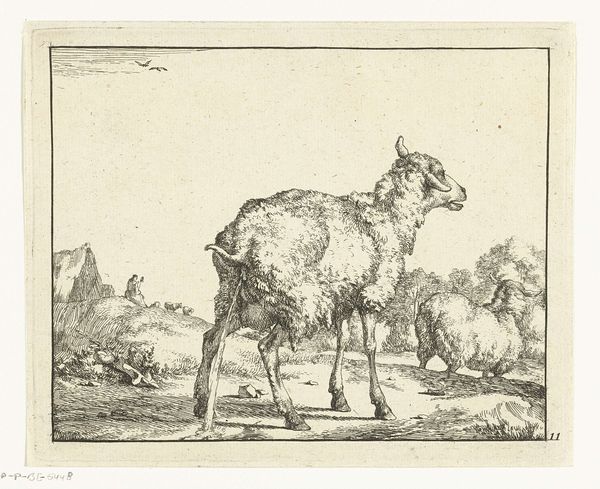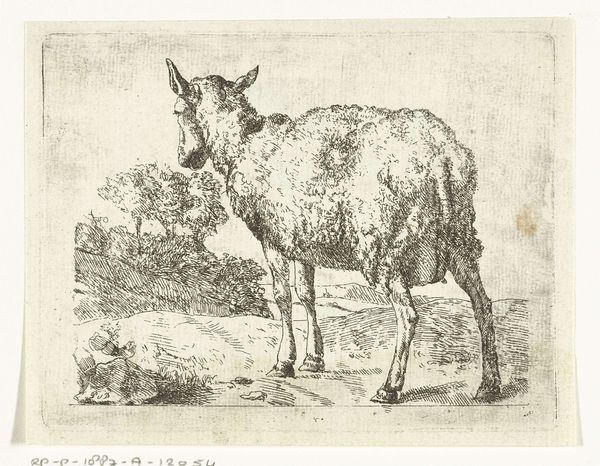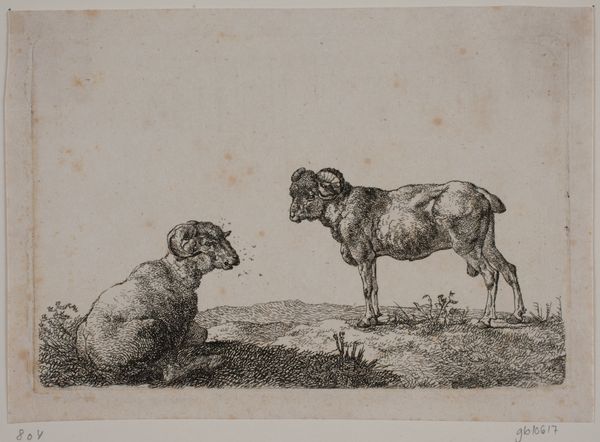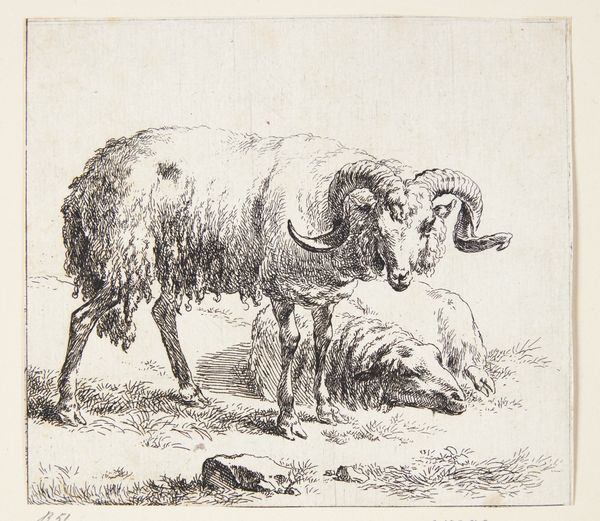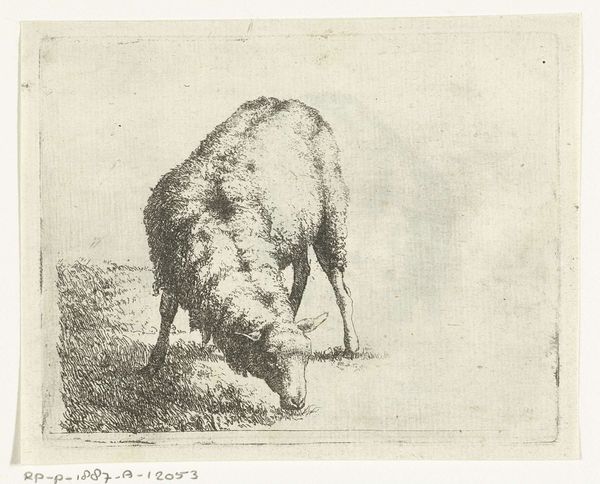
Plate 17: camels, from 'Various animals' (Diversi animali) 1636 - 1646
0:00
0:00
drawing, print, etching, engraving
#
drawing
#
baroque
#
animal
# print
#
etching
#
landscape
#
engraving
#
realism
Dimensions: Plate: 3 3/8 × 4 1/4 in. (8.5 × 10.8 cm) Sheet: 3 9/16 × 4 7/16 in. (9 × 11.3 cm)
Copyright: Public Domain
Editor: Here we have "Plate 17: camels, from 'Various animals'," an etching by Stefano della Bella, created sometime between 1636 and 1646. The composition feels really direct, almost like a zoological study, but the tiny figure in the background makes me think there’s more to it. What do you see in this piece? Curator: I see an interesting interplay between the scientific gaze and courtly spectacle. Della Bella was working during a time of burgeoning scientific exploration, and images like this fed a European curiosity about the exotic ‘Other.’ But remember, these prints weren't destined for textbooks. Editor: So, they were more about... entertainment? Curator: Partially. They were luxury goods, often collected by wealthy patrons who used them to signal their sophistication and worldly knowledge. Della Bella worked for the Medici court, so it's highly likely these were destined for an aristocratic audience. How do you think the image of the camel might have functioned within that context? Editor: Hmm… a symbol of power, maybe? Something rare and valuable to possess, even if only as an image? Curator: Exactly. And think about the technique. Etching allowed for a remarkable level of detail, conveying a sense of ‘truth’ about these creatures. Yet, it's a highly constructed image, shaped by European ideas about the Orient and the desire to classify and control the natural world. Editor: That's a different way to look at a picture of a camel! I guess it shows that even simple animal drawings can be tangled up in cultural ideas. Curator: Precisely! Art never exists in a vacuum; it's always a product of its time and place, reflecting social dynamics and power structures. Looking at Della Bella’s work offers insights into the early modern period's fascination with the exotic.
Comments
No comments
Be the first to comment and join the conversation on the ultimate creative platform.
